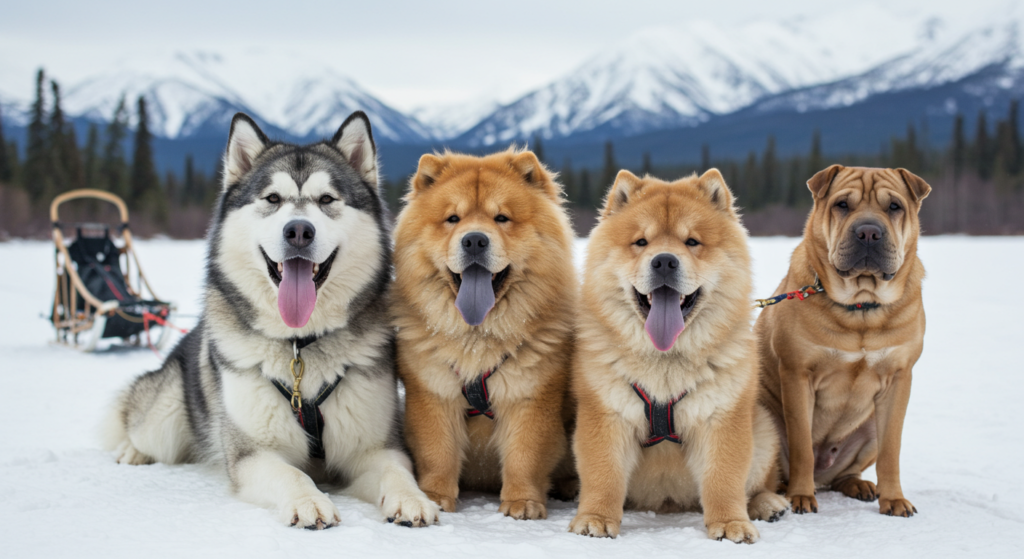Table of Contents
- Introduction
- Origin & History
- Physical Characteristics
- Tongue Spots & Genetic Heritage
- Breed Standards & Disqualifications
- Conclusion
- FAQs
Introduction
The Alaskan Malamute is a powerful, hardworking dog breed known for its strength, endurance, and friendly demeanor. Originating from Northwestern Alaska, this breed has ancient genetic ties to other blue-tongued dogs, such as the Chow Chow and Shar-Pei. While Alaskan Malamutes typically have pink tongues, some may display blue or spotted tongues due to their heritage. However, unlike some related breeds, blue eyes are a disqualification in the official breed standard.

Origin & History
The Alaskan Malamute traces its roots back to indigenous Inuit tribes in Alaska, where they were bred as sled dogs for hauling heavy loads across snowy terrain. Their lineage shares connections with ancient spitz-type dogs, including the Chow Chow and Shar-Pei, which explains occasional blue or spotted tongues.
Physical Characteristics
- Group: Working
- Size: Large, muscular build
- Coat: Thick double coat, suited for cold climates
- Tongue: Usually pink, but may have blue spots
- Eyes: Dark-colored; blue eyes are a disqualification
Tongue Spots & Genetic Heritage
While most Alaskan Malamutes have pink tongues, some exhibit blue or spotted tongues—a trait inherited from ancestors like the Chow Chow. These tongue spots are harmless and simply a nod to their genetic past. However, unlike Siberian Huskies, blue eyes are not accepted in this breed.
Breed Standards & Disqualifications
According to official breed standards:
- Acceptable: Spotted or partially blue tongues
- Disqualification: Blue eyes
- Purpose: Maintains the breed’s traditional working-dog integrity
Conclusion
The Alaskan Malamute is a majestic, hardworking breed with a rich history. While their occasional blue tongue spots reflect their genetic ties to other ancient breeds, blue eyes remain a disqualification. Ideal for active families, these dogs excel in cold climates and thrive with proper exercise and companionship.
FAQs
1. Do all Alaskan Malamutes have blue tongues?
No, most have pink tongues, but some may have blue spots due to genetic heritage.
2. Are blue eyes common in Alaskan Malamutes?
No, blue eyes are a disqualification in the breed standard.
3. What group does the Alaskan Malamute belong to?
They are classified under the Working group.
4. Where did the Alaskan Malamute originate?
They originated in Northwestern Alaska as sled dogs.
5. Are tongue spots a health concern?
No, blue or spotted tongues are a harmless genetic trait.
